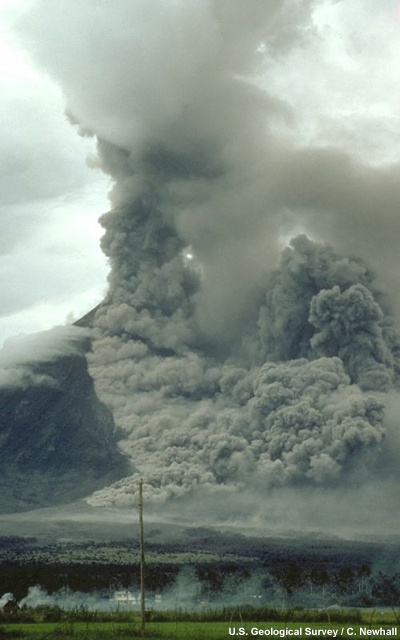Volcanic Hazards » Pyroclastic Flows
A pyroclastic flow is a ground-hugging avalanche of hot ash, pumice, rock fragments, and volcanic gas that rushes down the side of a volcano at speeds in excess of 60 m/hr (100 km/hr). The temperature within a pyroclastic flow may be greater than 900° F (500° C), sufficient to burn and carbonize wood (see http://volcanoes.usgs.gov/images/pglossary/PyroFlow.php for more information).

Pyroclastic flow sweeps down the side of Mayon Volcano, Philippines, during an explosive eruption on 15 September 1984. Note the ground-hugging cloud of ash (lower left) that is billowing from the pyroclastic flow and the eruption column rising from the top of the volcano. (U.S. Geological Survey)
A pyroclastic flow can destroy nearly everything in its path. It buries sites with hot rock debris, melts snow and ice to form lahars, and burns forests, crops and buildings (see http://volcanoes.usgs.gov/hazards/pyroclasticflow/index.php for more information).
